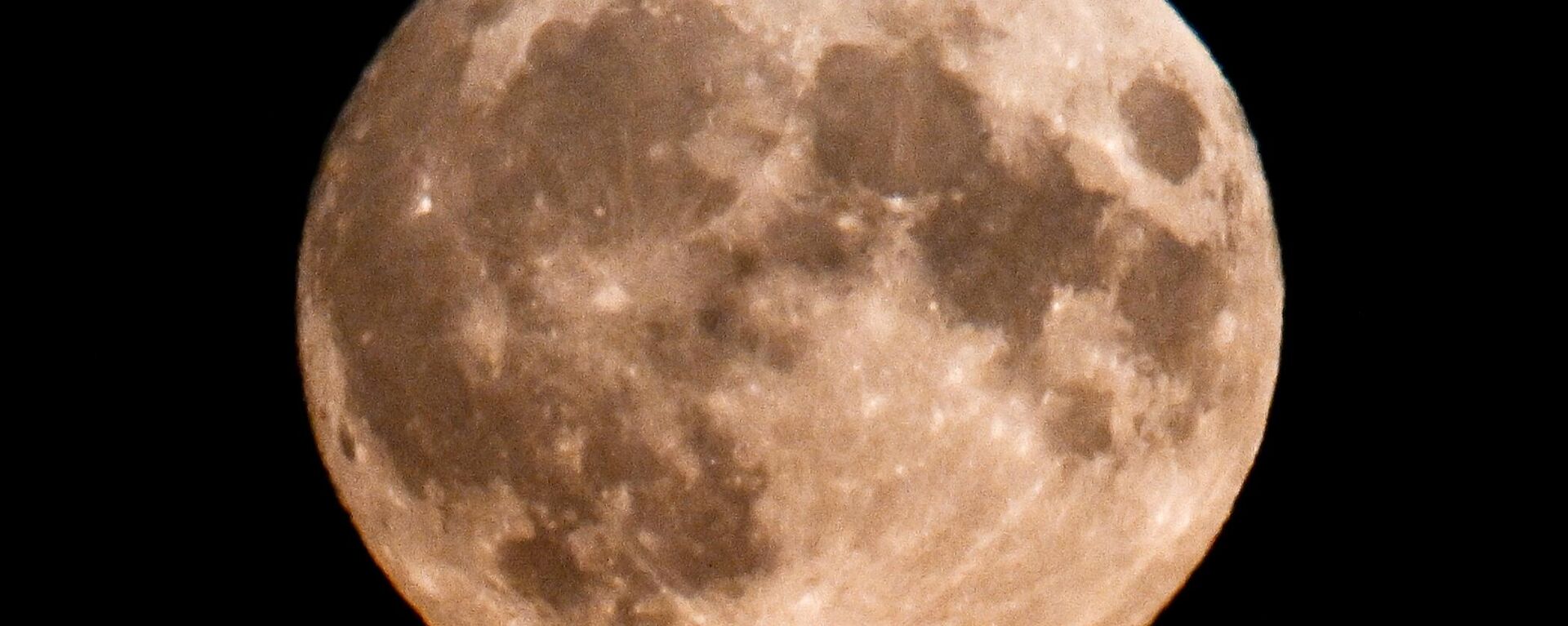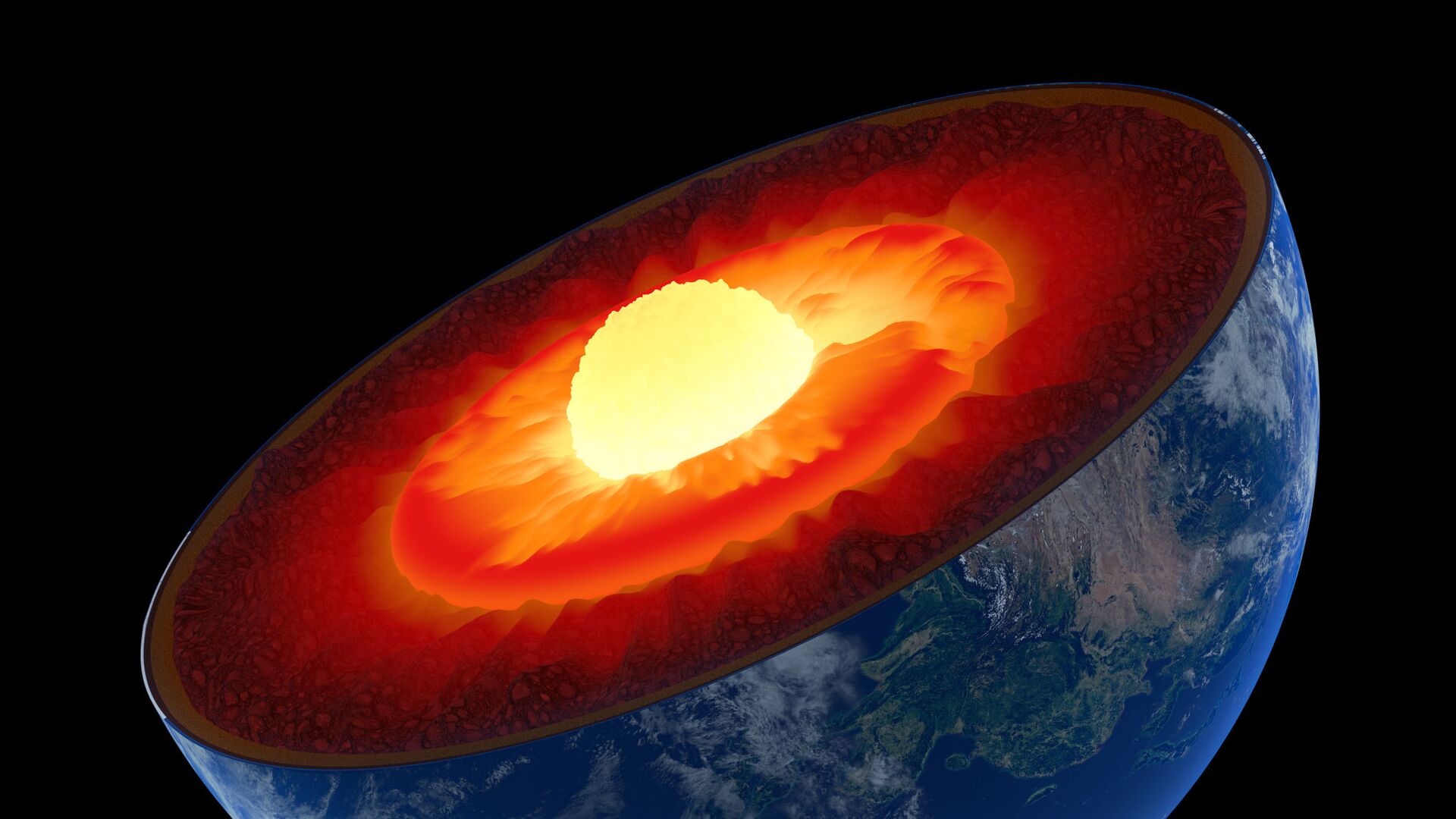https://sputnikglobe.com/20231104/traces-of-ancient-planet-may-be-lodged-deep-inside-earth-study-claims-1114723866.html
Traces of Ancient Planet May Be 'Lodged' Deep Inside Earth, Study Claims
Traces of Ancient Planet May Be 'Lodged' Deep Inside Earth, Study Claims
Sputnik International
At a time when Earth was still being formed, a planetary body since dubbed Theia slammed into our planet. Upon impact, it broke apart, sending a huge amount of material into orbit around Earth—material that eventually coalesced into the Moon.
2023-11-04T15:34+0000
2023-11-04T15:34+0000
2023-11-04T15:34+0000
beyond politics
science & tech
planet
california institute of technology
earth mantle
earth
moon
https://cdn1.img.sputnikglobe.com/img/07e5/03/05/1082266219_0:267:2049:1419_1920x0_80_0_0_2547b0101dbe3e58b867d5e7d9d9b46f.jpg
An ancient planet may have rammed into Earth when it was still being formed about 4.5 billion years ago, and its remnants could still be inside Earth, a new study has claimed.Furthermore, what was left of that impact between the celestial orb and Earth resulted in the formation of the Moon, according to scientists at the California Institute of Technology.The team behind the research, details of which were outlined in a peer-reviewed paper published in the journal Nature, was following up on the discovery of material detected under large swathes of Africa and the Pacific Ocean as far back as in the 1980s. Located near Earth’s core, the aforementioned dense material supposedly boasts high levels of iron. In an interesting twist, it reacts to seismic waves in a different manner than surrounding solid materials - they slow when doing so. At some point, the theory surfaced that it could be leftover traces of the mysterious Theia. The discovered sections of material have been referred to by geoscientists as large low-velocity provinces, or LLVPs. Now, research suggests that these LLSVPs within the Earth's mantle are traces of the protoplanet Theia, scattered debris from which also led to the creation of the Moon.For years, scientists have been studying meteorites and lunar samples collected during the Apollo missions to prove the theory of how the moon formed. In the new paper, entitled "Moon-forming impactor as a source of Earth's basal mantle anomalies," the first author Qian Yuan, O.K. Earl postdoctoral scholar research associate in geophysics, suggested that a greater part of Theia was absorbed into the young Earth, forming the LLVPs. It was then that residual material from the collision coalesced to form the Moon.Now, chemical signatures of material from these LLVPs and the Moon would need to be compared, according to Yuan. However, this is a challenge, as science as yet cannot drill deep enough into Earth to reach these blobs. But there are other interesting studies linked to the new research."It makes sense, therefore, to investigate next what consequences they [LLVPs] had for Earth’s earliest evolution, such as the onset of subduction before conditions were suitable for modern-style plate tectonics, the formation of the first continents, and the origin of the very oldest surviving terrestrial minerals,” the study team added.
https://sputnikglobe.com/20231023/new-study-finds-moon-40-million-years-older-than-previously-thought-1114437356.html
earth
Sputnik International
feedback@sputniknews.com
+74956456601
MIA „Rossiya Segodnya“
2023
News
en_EN
Sputnik International
feedback@sputniknews.com
+74956456601
MIA „Rossiya Segodnya“
Sputnik International
feedback@sputniknews.com
+74956456601
MIA „Rossiya Segodnya“
traces of an ancient planet, theia, large low-velocity provinces, llvpslodged deep inside earth
traces of an ancient planet, theia, large low-velocity provinces, llvpslodged deep inside earth
Traces of Ancient Planet May Be 'Lodged' Deep Inside Earth, Study Claims
At a time when Earth was still being formed, a planetary body since dubbed Theia slammed into our planet. Upon impact, it broke apart, sending a huge amount of material into orbit around Earth—material that eventually coalesced into the Moon.
An ancient planet may have rammed into Earth when it was still being formed about 4.5 billion years ago, and its remnants could still be inside Earth, a new study has claimed.
Furthermore, what was left of that impact between the celestial orb and Earth resulted in the formation of
the Moon, according to scientists at the
California Institute of Technology.The team behind the research, details of which were outlined in a peer-reviewed
paper published in the journal
Nature, was following up on the discovery of material detected under large swathes of Africa and the Pacific Ocean as far back as in the 1980s. Located near Earth’s core, the aforementioned
dense material supposedly boasts high levels of iron. In an interesting twist, it reacts to seismic waves in a
different manner than surrounding solid materials - they
slow when doing so. At some point, the theory surfaced that it could be
leftover traces of the mysterious Theia.
It has been hypothesized that over four billion years ago Theia - about the size of Mars - was on a similar orbit to Earth. As the force of gravity between the two planets grew, they collided. Afterwards, Earth grew, and eventually sustained an atmosphere. As for Theia, its debris was ejected out, but research has found no evidence of the ancient planet in any nearby asteroids or meteorites.
The discovered sections of material have been referred to by geoscientists as large low-velocity provinces, or LLVPs. Now, research suggests that these LLSVPs within the Earth's mantle are traces of the protoplanet Theia, scattered debris from which also led to the creation of the Moon.
“A logical consequence of the idea that the LLVPs are remnants of Theia is that they are very ancient,” Paul Asimow, a professor of geology and geochemistry at CIT, said in a statement.
For years, scientists have been studying meteorites and lunar samples collected during the Apollo missions to prove the theory of how the moon formed. In the new paper, entitled "Moon-forming impactor as a source of Earth's basal mantle anomalies," the first author Qian Yuan, O.K. Earl postdoctoral scholar research associate in geophysics, suggested that a greater part of Theia was absorbed into the young Earth, forming the LLVPs. It was then that residual material from the collision coalesced to form the Moon.
Now, chemical signatures of material from these LLVPs and the Moon would need to be compared, according to Yuan. However, this is a challenge, as science as yet cannot drill deep enough into Earth to reach these blobs. But there are other interesting studies linked to the new research.
"It makes sense, therefore, to investigate next what consequences they [LLVPs] had for Earth’s earliest evolution, such as the onset of subduction before conditions were suitable for modern-style plate tectonics, the formation of the first continents, and the origin of the very oldest surviving terrestrial minerals,” the study team added.

23 October 2023, 21:16 GMT



